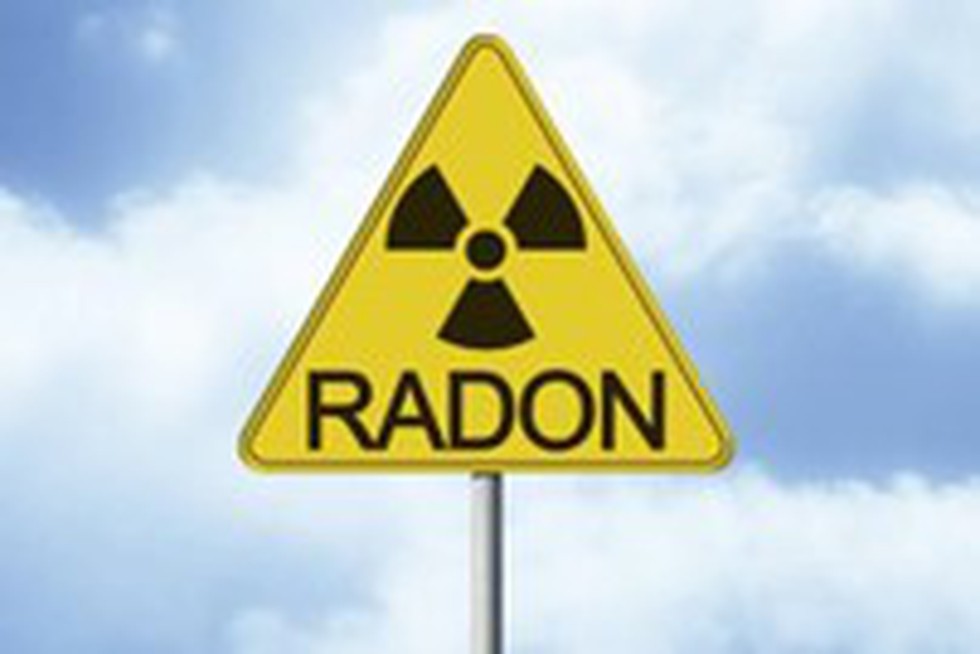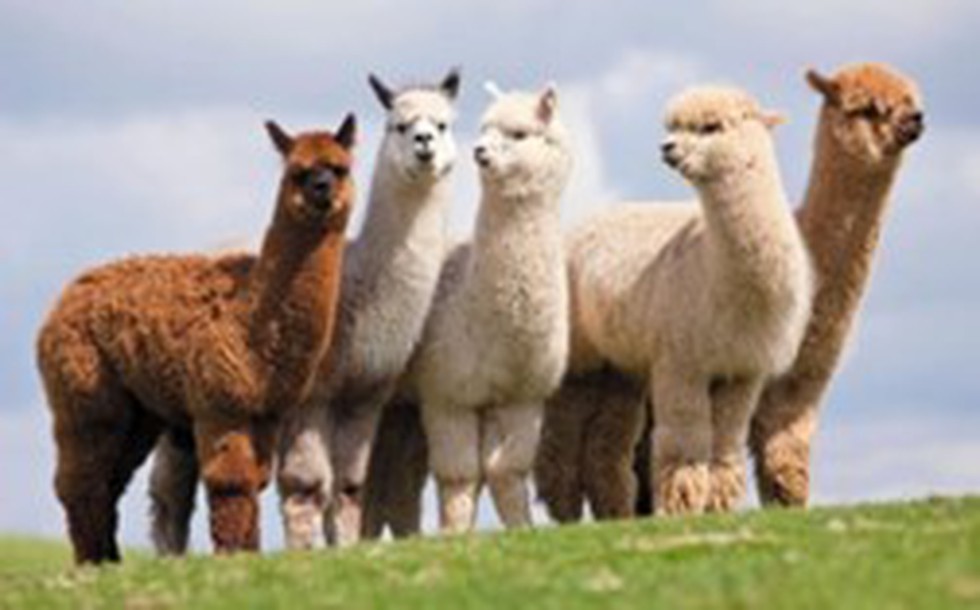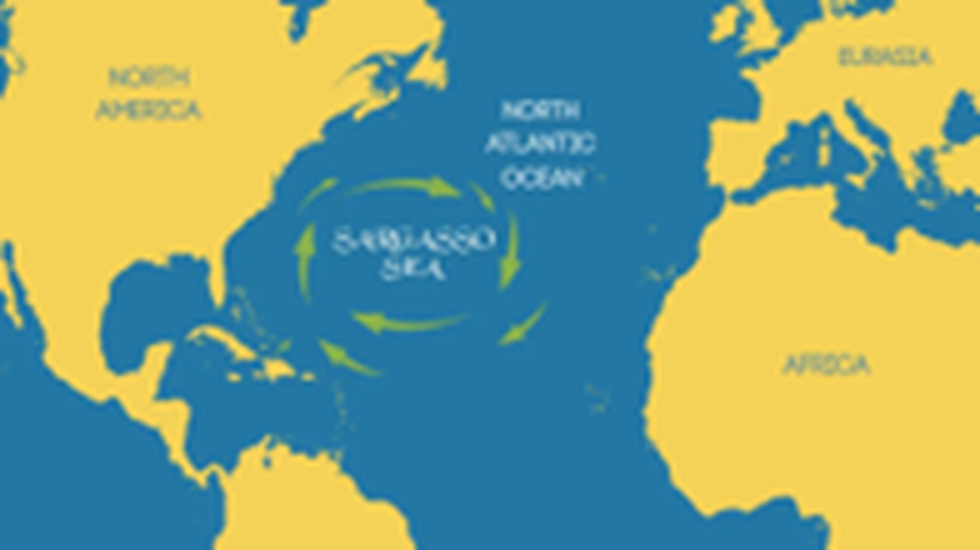
About Radon:
- Radon is a radioactive gas that forms naturally when uranium, thorium, or radium, which are radioactive metals, break down in rocks, soil, and groundwater.
- It is an inert, colourless, and odourless gas.
- Radon gas usually exists at very low levels outdoors, but the gas can accumulate in areas without adequate ventilation, such as underground mines.
- Radon can get into homes and buildings through small cracks or holes and build up in the air.
- Radon levels may be higher in homes that are well insulated, tightly sealed, and/or built on soil rich in the elements uranium, thorium, and radium.
- As we breathe, these particles are deposited on the cells lining the airways, where they can damage DNA and potentially cause lung cancer.
- It is the second-most important cause of lung cancer after smoking and the leading cause of lung cancer among non-smokers.
- According to the WHO, radon is estimated to cause between 3% to 14% of all lung cancers in a country, depending on the national average radon level and smoking prevalence.

Why in the News?
- In the recent Exercise Astrashakti 2023, a single unit of the Akash weapon system successfully engaged and obliterated four unmanned targets simultaneously.
- This demonstration established India as the first country to exhibit the ability to engage four targets at such distances simultaneously using command guidance from a single firing unit.
About Akash Surface-to-Air Missile (SAM) Defence System:
- It is a Short-Range Surface-to-Air Missile (SRSAM) Defence System to protect vulnerable areas and points from air attacks.
- It was indigenously designed and developed by the Defence Research and Development Organisation (DRDO).
- Features:
- It can simultaneously engage multiple targets and destroy manoeuvring targets, including unmanned aerial vehicles, fighter aircraft, cruise missiles, and missiles launched from helicopters.
- It has built-in Electronic Counter-Counter Measures (ECCM) features.
- The entire weapon system has been configured to be launched from static or mobile platforms such as battle tanks and wheeled trucks, providing flexible deployment.
- It is road and rail transportable, with quick mobilisation and deployment capabilities.
- It can engage aerial targets up to a range of approximately 25 km.
- Altitude of Operation: 100 m up to 20 km
- Weight: 710 kg
- Guidance System: Command Guidance
- It is fully automatic, with a quick response time from target detection to kill.
- It has an open-system architecture that ensures adaptability to existing and futuristic air defence environments.

About Camelids:
- A Camelid refers to any of the even-toed ungulates of the family Camelidae. g. camels, llamas,alpacas, guanacos, and vicuñas.
- They are known for their remarkable adaptations to arid and high-altitude environments.
- These ungulates can be classified into two major groups: the Old World and the New World.
- The Old-World Camelids, found in northern Africa and central Asia are the true camels, such as the dromedary camels (one-humped camel) and the Bactrian camels (two-humped camel), characterised by:
- their humps on their backs and
- the dulla, which is an organ found on the throat of male camels and is believed to be associated with the display of dominance among males and for attracting females.
- The South American Camelids (New World Camelids) include the modern llamas, alpacas, guanacos, and vicuñas. Wild populations of South American Camelids, such as vicuñas, inhabit the high-altitude regions of the Andes Mountains.

About Rhine River:
- It is the 12th longest river in Europe, stretching approximately 1,230 kilometres from its source in Switzerland to its mouth on the North Seain the Netherlands.
- Origin: It originates from the southeastern part of the Swiss Alps in the Canton of Grisons, Switzerland.
- Drainage Basin: This transboundary river drains an area of about 185,000 square kilometres and flows through six countries: Switzerland, Germany, Austria, Liechtenstein, France, and the Netherlands.
- Course: It flows in a northward direction from its sources in Switzerland through the other five countries, and then turns west into the North Sea.
- Tributaries: Some of the notable tributaries of the Rhine River include Aare, Tamina, Moselle, Erft, Rein da Tuma, Plessur, Rotach, and Wiese.
- The major cities along the Rhine include Basel (Switzerland), Cologne, Bonn, Duisburg, Mainz, Leverkusen, and Neuss (Germany), Strasbourg (France), and Rotterdam and Utrecht (Netherlands).
- It facilitates industrial transportation and supports industrial production, with about 20% of the world’s chemical industries manufacturing along the river.

About Ex-Parte Decree:
- An ‘Ex parte decree’ is a decree passed against a defendant in absentia.
- Even after a summons is served, if only the plaintiff shows up for the hearing and the defendant does not, the court may proceed to hear the lawsuit ex parte and issue a decree against the defendant.
- The legal validity, enforceability, and operation of such a decree are similar to those of any bipartite decree.
- Can an Ex-Parte Decree be set aside?
- Courts generally aim to ensure fairness and due process, and if a genuine reason for the party’s absence is established, the ex-parte order can be set aside, allowing for a re-evaluation of the case with both parties present.
- The defendant against whom an ex-parte decree is passed, can file an application to the court that passed such a decree to set it aside on two grounds:
- Summons were not duly served upon him.
- He was prevented by sufficient cause from appearing before court.
- As per the CPC, there is no specific time limit mentioned to file an application to set aside the ex-parte order, but it is advisable to file the application as soon as possible after becoming aware of the ex-parte order.
- Supporting Evidence: The applicant should provide supporting evidence to substantiate their claim. For example, if the ground for setting aside the order is improper service of summons, the applicant may need to provide proof that the summons was not served correctly.
- Hearing: The court will schedule a hearing to consider the application. The court will assess the validity of the grounds presented by the applicant and may inquire into the circumstances that led to the ex-parte order.
- Discretion of the Court:
- The court has the discretion to decide whether the grounds presented are sufficient and whether the ex-parte order should be set aside.
- The court may also impose conditions and terms, including costs and other factors, when setting aside the order.

About the Sargasso Sea:
- The Sargasso Sea, located entirely within the Atlantic Ocean, is the only sea without a land boundary.
- It is named for Sargassum, a holopelagic, golden drift algae that can aggregate to form extensive floating mats on the surface of the ocean.
- This extraordinary open-ocean ecosystem is bounded by currents circulating around the North Atlantic subtropical gyre and is unique for supporting the centre of distribution and abundance for a community of continuously pelagic drift algae.
- It provides habitats, spawning areas, migration pathways and feeding grounds to a diverse assortment of flora and fauna, including endemic, endangered, and commercially important species.
- The Gulf Stream establishes the Sargasso Sea's western boundary, while the Sea is further defined to the north by the North Atlantic Current, to the east by the Canary Current, and to the south by the North Atlantic Equatorial Current.

About the Noma disease:
- It is a rapidly progressing severe gangrenous disease of the mouth and the face.
- The disease, also called cancrum oris or gangrenous stomatitis, is mostly found in sub-Saharan Africa.
- It mostly affects children aged 2–6 years suffering from malnutrition, affected by infectious diseases, living in extreme poverty with poor oral health or with weakened immune systems.
- It can also occur among immunocompromised adults due to HIV, leukaemia and other diseases.
- It starts as a soft tissue lesion (a sore) of the gums.
- It then develops into an acute necrotizing gingivitis that progresses rapidly, destroying the soft tissues and further progressing to involve the hard tissues and skin of the face.
- It is generally considered an opportunistic and non-contagious disease.
- Indeed, cases are seen in African countries outside this area as well as in other parts of the world, including Asia and Asia-Pacific, the Americas, the Middle East and Europe.
- Evidence indicates that the causative agents of noma are non-specific polymicrobial organisms.
- There is no documented evidence to support direct transmission from person to person.
- Treatment:
- Early detection is essential, as therapy is most effective at the early stages of disease when it appears as aggressively swollen gums (acute necrotizing gingivitis).
- Treatment typically includes prescription of widely available antibiotics, advice and support on practices to improve oral hygiene, disinfectant mouthwash and nutrition supplements.

About Hydrogen cyanide:
- It is a colourless or pale-blue liquid or gas with a bitter, almond-like odour.
- It is also known as hydrocyanic acid or HCN.
- Hydrogen cyanide interferes with the body’s use of oxygen and may cause harm to the brain, heart, blood vessels, and lungs.
- It is an excellent solvent for many salts, but it is not widely used as a solvent because of its toxicity.
- Application: It may be used in the workplace for fumigation, electroplating, mining, chemical synthesis, and the production of synthetic fibres, plastics, dyes, and pesticides.
Key facts about the Cassini spacecraft
- The mission was launched by NASA in 1997 and orbited Saturn from 2004 to 2017, circling the planet 294 times.
- It measured the structure of Saturn’s atmosphere and rings, as well as how they interact with the planet’s moons.
- It also discovered six named moons and revealed Enceladus and Titan as promising locations to search for extraterrestrial life.

About the Guru Teg Bahadur:
- Guru Teg Bahadur’s name earlier was Teyag Mal.
- He was the ninth of ten Gurus of the Sikh religion.
- His father and the sixth Guru of Sikhs, Guru Hargobind Sahib (1595-1644) changed the name to Teg Bahadur.
- He got his name from his fighting and sword skills on the battlefield.
- Works:
- He built the city of Anandpur Sahib (in Rupnagar/Ropar district, on the edge of Shivalik Hills, near the Sutlej River, in Punjab). Here the last two Sikh Gurus lived and where Guru Gobind Singh founded the Khalsa Panth in 1699.
- He contributed more than 100 poetic hymns to Granth Sahib which cover various topics, such as the nature of God, human attachments, body, mind, dignity, service etc.
- He was instrumental in the conciliation between Raja Bishan Singh and Raja Paranpal, thus avoiding a war.
- He was first arrested by the Mughals on the orders of Aurangzeb in 1665.
- He was publicly beheaded in 1675 on the orders of Mughal emperor Aurangzeb in Delhi.

About the Mount Vinson:
- It is the highest mountain in Antarctica.
- Mount Vinson rises 4,892 metres (16,050 feet) above sea level.
- It is part of the Sentinel Range of the Ellsworth Mountains, near the Ronne Ice Shelf.
- There are five other tall mountains in the same area as Mount Vinson—the next five highest summits on the continent of Antarctica—which are collectively referred to as Vinson Massif.
- It is located about 1,200 kilometres from the South Pole, one of the coldest places on Earth.
Key facts about the Ellsworth Mountains:
- The Ellsworth Mountains are the mountain ranges in Antarctica.
- They are forming a 360 km (224 mi) long and 48 km (30 mi) wide chain of mountains in a north to south configuration.
- Also, they are bisected by Minnesota Glacier to form the Sentinel Range to the north and the Heritage Range to the south.
- The former is by far the higher and more spectacular with Mount Vinson (4,892 m) constituting the highest point on the continent.


























































































































































.png)
.png)
.png)
.png)
.png)


.png)
.png)
.png)





.png)
.png)






.png)
.png)
.png)
.png)
.png)
.png)
.png)
.png)
.png)

.png)







.png)
.png)


.png)
.png)
.png)


.png)

.png)
.png)





.jpg)

.png)
.png)


.png)

.png)
.png)
.png)

.jpg)

.jpg)


.png)

.png)
.png)
.png)
.png)
.png)
.png)
.png)
.png)
.png)
.png)




.png)

.png)





.png)
.png)
.png)
.png)
.png)
.png)
.png)
.png)
.png)
.png)
.jpg)
.jpg)

.png)
.png)
.png)
.png)
.png)
.png)
.png)
.png)
.png)
.png)
.png)
.png)
.png)
.png)
.png)
.png)
.png)
.png)
.png)
.png)
.png)
.png)



.png)
.png)

.jpg)
.jpg)


.jpg)
.jpg)
.jpg)
.jpg)
.jpg)

.jpg)








.jpg)
.jpg)
.jpg)
.jpg)
.jpg)

















.jpg)
.jpg)







.jpg)


















.jpg)
.jpg)






























































































.jpg)
.jpg)


























.jpg)

.jpg)










.jpg)








.jpg)




.jpg)










.jpg)


















.jpg)












































.jpg)














.jpg)
.jpg)
.jpg)





.jpg)

.jpg)
.jpg)





































































.jpg)


































.jpg)
.jpg)
















































.jpg)












.jpg)


.jpg)




.jpg)
.jpg)
.jpg)

.jpg)
.jpg)
.jpg)
.jpg)

.jpg)
.jpg)
.jpg)

.jpg)
.jpg)
.jpg)
.jpg)
.jpg)
.jpg)
.jpg)
.jpg)

.jpg)


.jpg)
.jpg)
.jpg)
.jpg)
.jpg)
.jpg)
.jpg)
.jpg)
.jpg)
.jpg)











.jpg)
.jpg)





.jpg)
.jpg)
.jpg)
























.jpg)
























.jpg)









.jpg)
.jpg)







.jpg)
.jpg)









































.jpg)
.jpg)
.jpg)
.jpg)
.jpg)

.jpg)
.jpg)
.jpg)
.jpg)
.jpg)


.jpg)
.jpg)
.jpg)
.jpg)
.jpg)

.jpg)
.jpg)
.jpg)
.jpg)
.jpg)
.jpg)
.jpg)
.jpg)
.jpg)
.jpg)
.png)

.png)
.png)

.png)
.png)
.png)
.png)


.jpg)
.jpg)

.jpg)
.jpg)
.jpg)

.png)
.png)
.png)
.png)
.png)
.png)
.png)

.png)
.png)
.png)
.png)
.png)
.png)
.png)
.png)
.png)
.png)





































































-min.png)



.png)




.png)








































